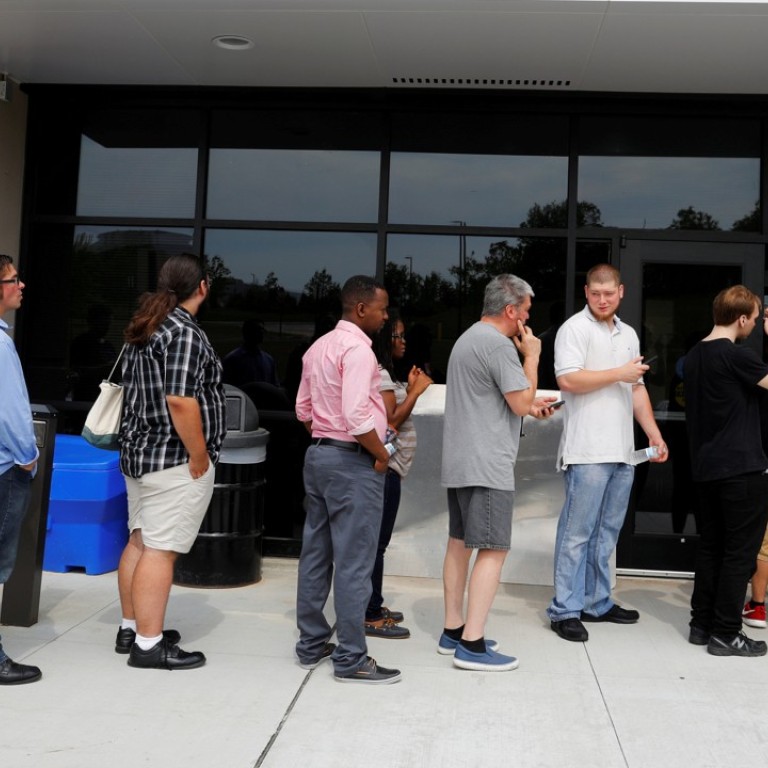
Trump’s tweet-worthy jobs data should be tempered with attention to other indicators
Neal Kimberley says even encouraging signs from US non-farm payrolls and average hourly earnings data should not be viewed in isolation. Rather, retail sales figures and the flat Treasury yield curve tell a less optimistic story
This Friday’s US non-farm payrolls figure and average hourly earnings income data are the main focus for markets, and both sets of numbers shouldn’t be viewed in isolation.
That aside, it’s only fair to Trump to note that initial claims for state unemployment benefits, for the week that ended March 24, did fall by 12,000 to a seasonally adjusted 215,000, and that was the lowest level seen since January 1973. From Trump’s perspective, it was a tweet-worthy moment.
It might well be that while the US economy has been creating lots of jobs, those jobs are not particularly well paid
Yet it’s that 158-week run which is arguably more important than the 45-year low, because the length of time the US jobs market has been strong hasn’t really translated, at least so far, into marked accelerations in average hourly earnings. In 2017, average hourly earnings grew by 2.5 per cent over the year, amounting to a rise of just 65 cents, to December’s figure of US$26.63.
Of course, it might well be that while the US economy has been creating lots of jobs, those jobs are not particularly well paid. Perhaps that helps explain why, even though the US jobs market is robust, US retail sales fell in February for the third month in succession.
As for this Friday, economists polled by Reuters are expecting the non-farm payrolls number for March to show a rise of 198,000, a respectable figure, even if way below February’s unexpected 313,000 surge. As for average hourly earnings, the poll’s consensus view is for March to exhibit a 2.7 per cent year-on-year increase following February’s 2.6 per cent gain.
The same survey expects the US unemployment rate to drop to 4 per cent from 4.1 per cent, bringing it to its lowest level since December 2000’s 3.9 per cent and possibly eliciting a presidential tweet in the process.

But while US jobs data expectations are upbeat, the yield on 10-year US Treasuries actually fell last week and the US yield curve flattened.

But it might also be the case that the US bond market is starting to collectively wonder whether, regardless of individual US data points such as non-farm payrolls figure and average hourly earnings, the potential for yet higher yields at the longer end of the US yield curve might be limited by the possibility that the US economy, with its huge dependence on the US consumer, just cannot afford it.
That doesn’t mean that the market is still not betting on higher 10-year US yields. If data released by the US Commodity Futures Trading Commission, for the week ending March 27, is any guide, there still exists a very large short US 10-year Treasury note futures position that is predicated on the 10-year yield rising. But this does not mean that position will be a winner.
On Main Street, borrowing costs have already risen.
According to data for the week ending March 29, from US government-controlled mortgage giant Freddie Mac, the average 30-year fixed rate for conventional US mortgages was 4.44 per cent. For the seven days up to January 4, it was 3.95 per cent.
In a nutshell, while sub-forecast US jobs data on Friday would help undermine the case for higher US yields, strong data might not necessarily seal the deal for those who are betting on such a move. The jobs data should be seen in the round. Viewed in isolation, it could mislead.
Neal Kimberley is a commentator on macroeconomics and financial markets

